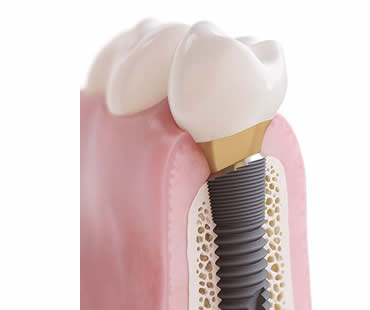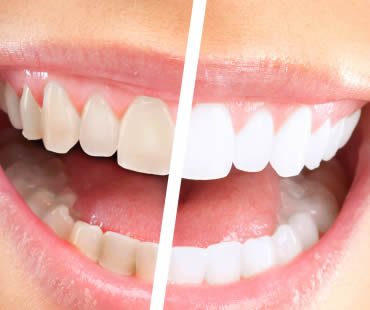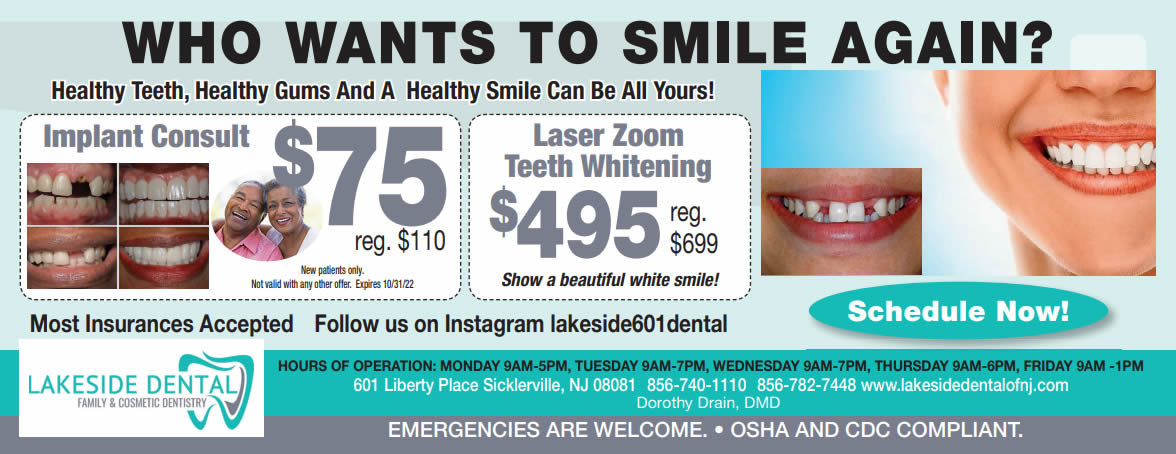
Restoring missing teeth with dental implants is the latest and greatest technique to give you your smile back. It offers many benefits such as comfort, aesthetics, security, and easy maintenance. If you are missing any teeth and would like to learn more about getting dental implants, you need to find a qualified and experienced dental professional for the job. Here are some tips on doing so.
Training
Dentists or oral surgeons who perform dental implants should have training specifically in the procedure. Look for a professional with credentials like a dentistry degree from a reputable university, participation in continuing education programs, and membership in dental organizations.
Reviews
Look online for reviews of the dentist and practice, and be sure to ask friends and family for recommendations. Word of mouth is often the best way to find a healthcare professional.
Examples of work
Ask to see before-and-after pictures of dental implants performed by the dentist. Request to see cases similar to yours.
Technology
A quality dental office should have the latest advancements in technology and equipment so that you will receive the most up-to-date care. Look for equipment like digital X-rays, chair side screens, and dental lasers. Also inquire about sedation or anesthesia methods available in the office.
Convenience
The location of the office should factor into your decision as you choose a professional to perform your dental implant procedure, as well as the office hours and staff. You should feel confident in the care you’ll receive, and feel comfortable asking questions and receiving treatment. Implant treatment requires multiple visits, so choose a dentist who you don’t mind establishing a relationship with over time.
We treat patients from Sicklerville and the surrounding area

For many years, your only choice for replacing missing teeth was dentures or bridges. Now dental implants offer an impressive alternative. Don’t rule them out just because you don’t know what they are, what the process is, who makes a good candidate, or what the benefits include. Learn more about implants so you can make an educated decision whether they’re right for you.
Teeth can be lost or severely damaged for many reasons such as gum disease, tooth decay, or injury. Dental implants provide a solution by surgically placing a titanium root directly into your jawbone. A post connects the implant to an artificial tooth that is placed on top during a second surgery. Usually there is a delay between the first and second surgeries to allow for proper healing so that the implant is successful.
Implants offer lots of benefits. They look and feel like your real teeth, and there’s no slipping or speech problems as with other restorations. They have a very high success rate and can last a lifetime with good care. Your oral hygiene tasks are the same as with real teeth. Your self-esteem will increase with your fully restored and functional smile.
Although many people are good candidates for implants, your dentist will let you know if there are risks for you. Healthy gums are very important, so those with periodontal disease may not be suitable. There also must be sufficient jaw bone support for implants to attach successfully, or you might be able to have bone grafting done to achieve more jaw strength before implants.
Dental implants are often the ideal solution for people who are missing teeth. Even though you might be nervous about the procedure, implants provide a great way to restore your smile comfortably and naturally.
Dental Implants Sicklerville

Nobody is happy with yellow or brown teeth. Ugly stains from smoking or consuming foods and drinks prone to discoloring your teeth can make you a good candidate for teeth whitening. There are many techniques available to restore your bright smile. The main two categories of teeth whitening are either at-home kits or professional treatment in a dental office. Let’s learn about these to see which you’d like to use to brighten your smile.
At-home teeth whitening
There are a variety of products you can try yourself to whiten your teeth. These treatments usually take a few weeks of use before your teeth are noticeably whiter. Also remember that most of these products cannot achieve as high of a level of whiteness as those performed professionally.
- Kits – whitening kits contain a tooth mold and gel to place inside the mold. You wear the filled mold for about 30 minutes for 2-3 weeks.
- Strips – thin whitening strips are coated with peroxide gel, and then you apply the strips directly to your teeth for 30 minutes for 14 days. Results become evident in a few days and last about four months.
- Toothpaste – brushing with whitening toothpaste must be done consistently and you must be patient because reaching the desired outcome usually takes a couple of months.
Professional teeth whitening
Treatments done by a dentist are the fastest and most effective way to regain your pearly whites.
- Laser whitening – the dentist coats your teeth with a hydrogen peroxide solution and then shines a laser light on them. This oxidizes the stains and gives them a whiter appearance.
- Porcelain veneers – if your teeth are severely stained and other whitening techniques haven’t done the trick, your dentist may recommend porcelain veneers. These shells permanently cover your teeth and provide a beautiful smile.
Teeth Whitening dentist in Sicklerville

If you have decided to enhance your smile, you will need to select a good cosmetic dentist. Having an excellent practitioner to transform your appearance can make all the difference. It’s important to choose a cosmetic dentist that you trust and who you feel will produce exceptional results.
Keep these questions in mind as you search for a cosmetic dentist:
Does the dentist have extensive cosmetic training?
Just as you wouldn’t see your family doctor to perform knee replacement surgery, you shouldn’t choose a general dentist with little cosmetic experience to update your smile. Look at the dentist’s bio and find out what organizations he or she is affiliated with, like the American Academy of Cosmetic Dentistry or Las Vegas Institute for Advanced Dental Studies.
How many smile makeovers has the dentist completed?
Cosmetic dentistry combines art with science, so you want to select a dentist with both technical skill and a good eye for detail. Developing this talent takes years of practice; you don’t need to be part of the trial and error phase.
Can the dentist provide examples and photos of finished cases?
An experienced cosmetic dentist should have plenty of Before and After photos for you to look through and see if you like the results. Make sure to verify that any pictures you see in the office are of actual patients and not just stock photos.
What do patients say about the dentist’s work?
Not only should you ask for patient referrals, but use the Internet as a good resource. With review Web sites and social media sites like Facebook, you should be able to find unbiased patient opinions about any dentist you are considering.
Cosmetic dentist in Sicklerville

Tooth loss is a common occurrence – millions of people suffer tooth loss – primarily as a result of gum disease, tooth decay or facial trauma. For years, the only treatment options available to those missing a tooth were partial dentures or bridges. Today, dental implants are available as an alternative. If you have lost a tooth, you may wonder why you should choose a dental implant over a bridge or partial denture.
Following are some of the advantages of dental implants:
- Dental implants prevent bone loss. Without the tooth root, the bone of the jaw begins to shrink, or resorb, causing problems with remaining teeth and changing the shape of the face. Dental implants serve as replacement roots for the tooth, and continue to stimulate and preserve the bone. When an implant is used, the jawbone fuses to the metal implant in a process known as osseointegration, reducing bone shrinkage significantly.
- Dental implants look better. They feel, look and function like your own natural teeth. Because they fuse directly with your bone, they become permanent, and with proper care, never need to be replaced.
- Dental implants fit better. They are more comfortable and are easier to clean. Because they are so secure, you will speak more clearly and eat with greater confidence and comfort.
- Dental implants will improve your oral health. Implants don’t affect the surrounding teeth the way a bridge does. Your natural teeth remain intact, allowing for easier greater health and cleaning around each tooth.
- Dental implants are convenient. They never have to be removed to clean under them, nor do they need adhesives or wire to stay in place.
- Dental implant surgery has a very high success rate. They are durable and can last a lifetime if you care for them properly.
If you are healthy enough to undergo an extraction of your tooth, you can generally be considered for dental implant surgery. You must have enough healthy bone and soft tissue to hold the implant. Talk to your dentist today if you have questions regarding dental implants and whether they are a right choice for you.
Our dental office is located in Sicklerville

Enamel bonding and recontouring is an easy way to hide small imperfections in your teeth, or to lengthen or change the overall shape. Treatment can often be completed in one visit to your dentist in Sicklerville and it’s extremely affordable. Even small changes can make quite a difference to your appearance. Enamel bonding and recontouring can both be carried out as separate treatments but they are often combined to give the best results.
Enamel recontouring can deal with issues such as slightly overlapping teeth or teeth that are just a bit out of alignment. Enamel bonding uses tooth colored composite resin materials to hide small imperfections. Your general dentist in Sicklerville can determine if one or both treatments are required. Before either of these procedures is carried out, your dentist will need to take dental x-rays and to examine your mouth, making sure your teeth and gums are healthy.
Enamel recontouring involves removing tiny amounts of tooth enamel to adjust the overall shape, position or length of your teeth. The amount removed is minimal and the effects can be subtle but noticeable. Afterwards the enamel is smoothed and polished to give a natural sheen.
The process for enamel bonding is equally straightforward. First your dentist in Sicklerville will apply an acidic liquid to your teeth which has the effect of slightly roughening the tooth surfaces and increasing the bond between the composite resin and your tooth. Next, your dentist will carefully apply the composite resin to the tooth, hardening the material using a special light. Finally, the composite resin will be shaped and polished to complete the process.
If you need a dentist in Sicklerville contact us today












